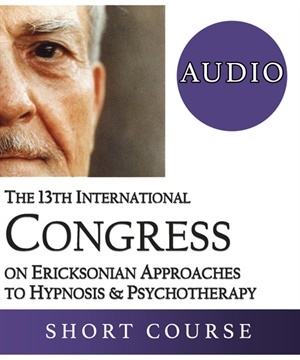IC19 Short Course 11 - The Last 24 Hours of Life - How We Help Patients to Die in Peace: Hypnotherapeutic Approaches with Dying Patients and their Families - Stefan Hammel, M.Th
- Average Rating:
- Not yet rated
- Topic Areas:
- Short Courses | Hypnotherapy | Aging and Mortality | Communication | Family Therapy
- Categories:
- Erickson Congress | Erickson Congress 2019
- Faculty:
- Stefan Hammel, MTh
- Course Levels:
- Master Degree or Higher in Health-Related Field
- Duration:
- 1 Hour 29 Minutes
- Format:
- Audio Only
- Original Program Date:
- Dec 12, 2019
- License:
- Never Expires.
Description
Description:
What can we do for dying people and their families in addition to palliative care? What is helpful to communicate during the last hours of life?
In this workshop we bring integrate the millennium-old pictorial traditions of religion with techniques of hypnotherapy including pacing and leading, utilizing metaphors, and the evocation of values and convictions of dying patients with their families.
Using case examples, we will explore how hypnotherapeutic and spiritual support can be combined to meet the emotional and somatic needs of patients – even in non-religious contexts and by non-religious staff for patients without any identified religious background.
We will discuss and practice techniques for communication, developing rapport, and building metaphors with patients who are unable to speak or clearly show their needs.
Questions addressed are:
- How can we communicate with dying patients – verbally and nonverbally?
- Which words can we choose that they will understand and find relevant?
- How can we perceive and interpret nonverbal responses from coma patients?
- How can we ease the fears and griefs of dying patients?
- How can we reduce their pain or breathing problems while we speak?
- How can we help dying patients to peacefully let go of life and the struggle for survival?
- How can religious imagery (shepherd, heaven as a home) be used by helpers and for dying persons without any strong religious conviction?
Educational Objectives:
- Identify at least two common obstacles to maintaining rapport with comatose patients, i.e. creating a "deadly silence".
- List and model at least three criteria for helpful communication with patients who may be unable to speak or clearly show their needs.
- Practice explaining and exemplify some of the potential benefits of three metaphors that can be used with dying patients and their relatives.
- Demonstrate at least two other interventions suitable for reducing dying patients' somatic and emotional suffering.
*Sessions may be edited for content and to preserve confidentiality*
Credits



